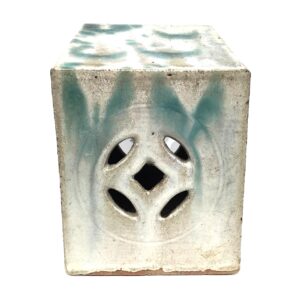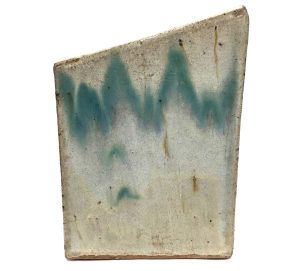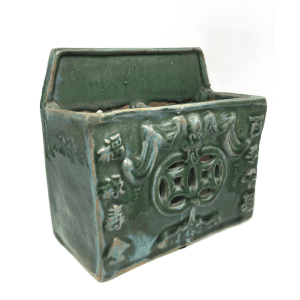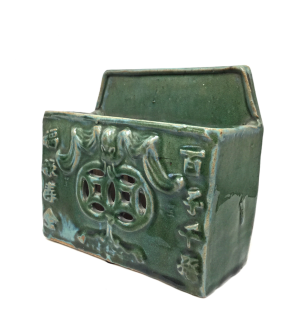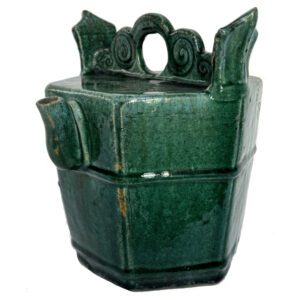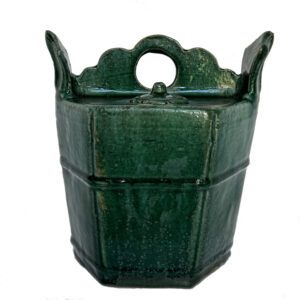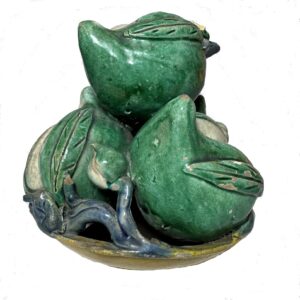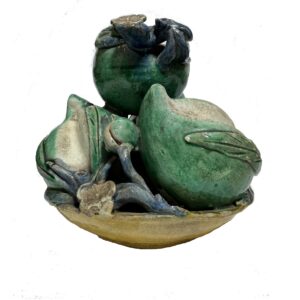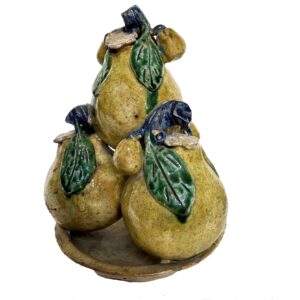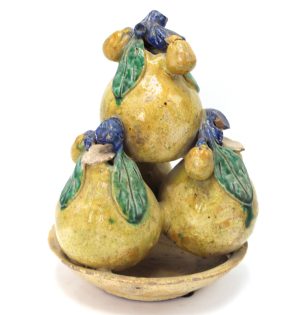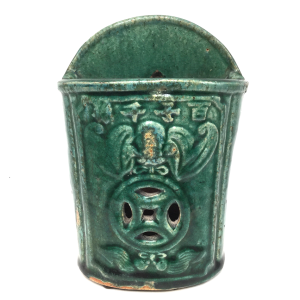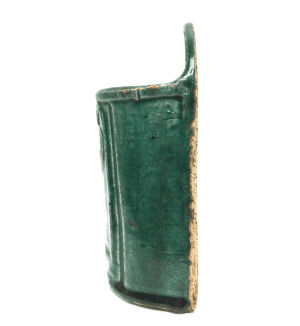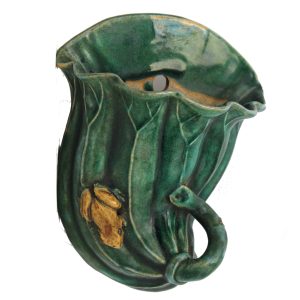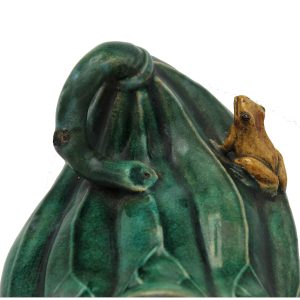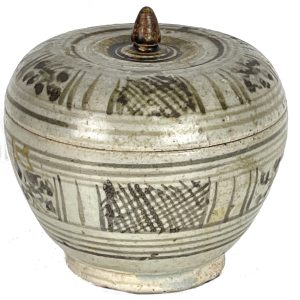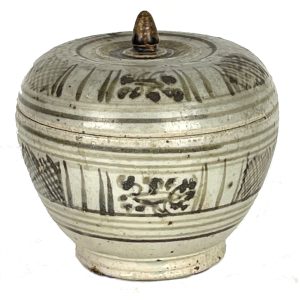-
Sale!


$235.00 Original price was: $235.00.$145.00Current price is: $145.00.
H: 7.25″ W: 5″ D: 5″ | FREE SHIPPING WITHIN CONTINENTAL U.S.
5-sided Shiwan glazed stoneware pillow with slanted top, used for smoking opium. The cool shell cradled the users’ heads and necks and hollow inside stored valuables. A candle placed inside emits a shadowy coin appealed to those in an opium state.
-
Sale!


$185.00 Original price was: $185.00.$135.00Current price is: $135.00.
H: 7.125″ W: 8.375″ D: 3.75″ | FREE SHIPPING WITHIN CONTINENTAL U.S.
Shiwan 2 part chopsticks holder with top holes for hanging and bottom ones for drainage. Chopsticks were wedding gifts from mothers to daughters with auspicious wishes: sons as soon as possible, blessing for prosperity, happiness and fertility, life-giving rain and abundance.
-
Sale!


$395.00 Original price was: $395.00.$270.00Current price is: $270.00.
H: 9″ W: 8.375″ D: 5.5″ | free shipping within continental u.s.
Apple green glazed teapot typical of Shiwan kiln pottery known for its brilliant flambé glazes in the 18-19th century. Hexagonal shape with yoked rounded handle with spiral decorations that adds a decorative touch.
-
Sale!


$450.00 Original price was: $450.00.$295.00Current price is: $295.00.
Ht: 5.5” Dia: 6” | FREE SHIPPING WITHIN CONTINENTAL U.S.
Shiwan stoneware peaches and lotuses on footed bowl auspicious symbols associated with springtime, fertility, long healthy life for many generations and therefore are propitious gifts for birthdays, especially for the elderly.
-
Sale!


$375.00 Original price was: $375.00.$295.00Current price is: $295.00.
H: 8.75″ DIA: 6.75 ” | FREE SHIPPING WITHIN CONTINENTAL U.S.!
Shiwan stoneware glazed sculptures of fruit symbolizing life and new beginnings to place on temple or home altar. They augment plates of fresh stacked fresh fruit to honor ancestors. These pears symbolize long life.
-
Sale!


$115.00 Original price was: $115.00.$95.00Current price is: $95.00.
H: 7.375″ W: 5.125″ D: 2.5″ | FREE SHIPPING WITHIN CONTINENTAL U.S.
Chopsticks are ubiquitous in Chinese culture, and are often included in a bride’s dowry as a wish for a speedy arrival of many sons. This Shiwan ware green glazed wall pocket chopsticks holder has characters wishing for many sons and grandsons and an upside down bat holding a coin for “blessings in front of your eyes.”
Decorative utilitarian Shiwanware pieces are recognized for their fine modeling, vivid expression, and colorful apple-green and drip glazes. Chopsticks were commonly stored in wall pockets with a hole for mounting. Covered with auspicious symbols, they were often part of a bride’s dowry as “chopsticks” is a pun for “speedy arrival of sons.”
-
Sale!


$285.00 Original price was: $285.00.$225.00Current price is: $225.00.
H: 8.25” W: 6.75” D: 3.5” | FREE SHIPPING WITHIN CONTINENTAL U.S.
Wall pockets are used to hold chopsticks and flowers to bring good fortune. This Shiwan pocket has frog and a lotus that together symbolize nurturing energy and transformation. Great cozy accessory for feng shui and a wonderful wedding gift.
-


$295.00
Ht: 4.25” Dia: 4.625” | SOLD
Produced in Thai kilns in the 14th to 15th centuries, Sawankhalok glazed stoneware lidded bowls were distributed through southeast Asia along with a variety of larger and smaller items. Lidded bowls like this were used to store many things, especially spices, powders and cosmetics, betel nut chewing materials, and medicine. This bowl rests on a thick foot, has a lid with a brown lotus bud handle and covered with decorative panels of underglaze brown crosshatch and vegetal scrolls.
End of content
End of content

